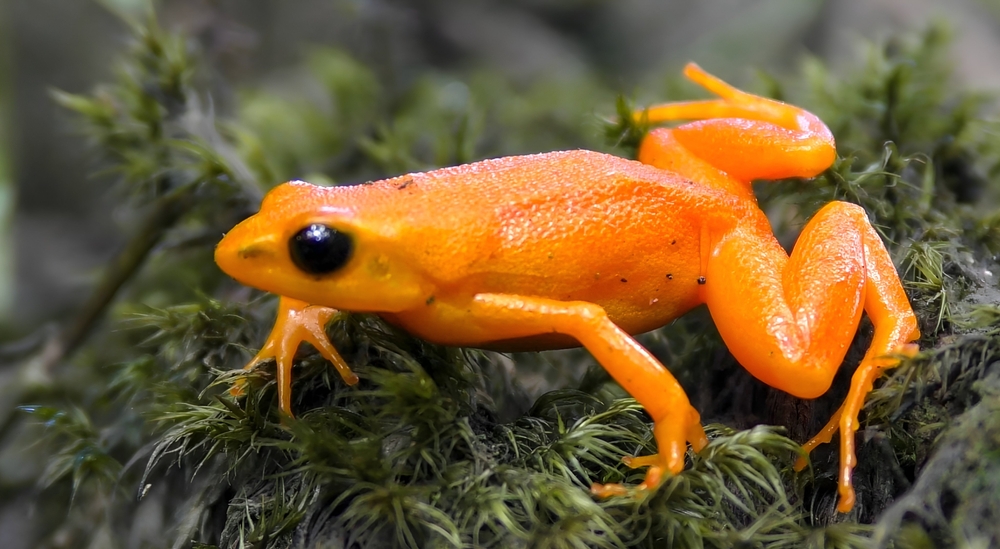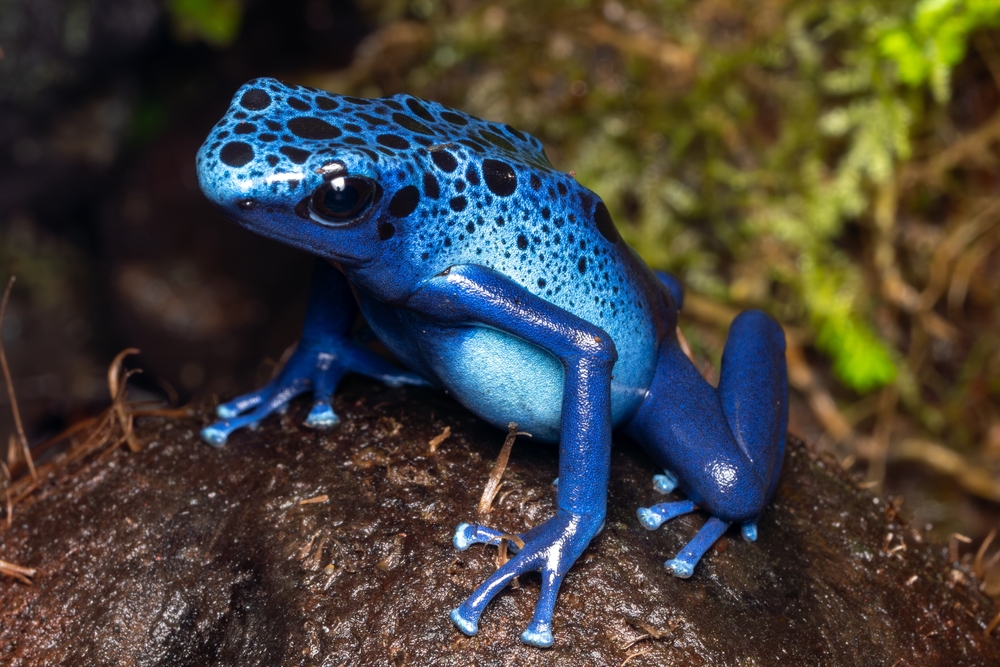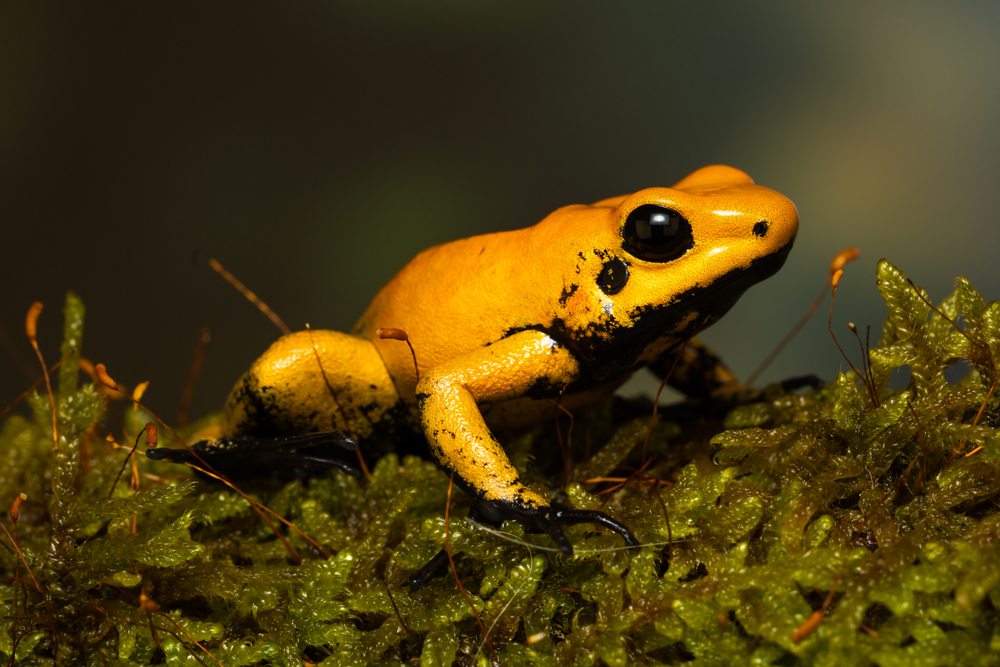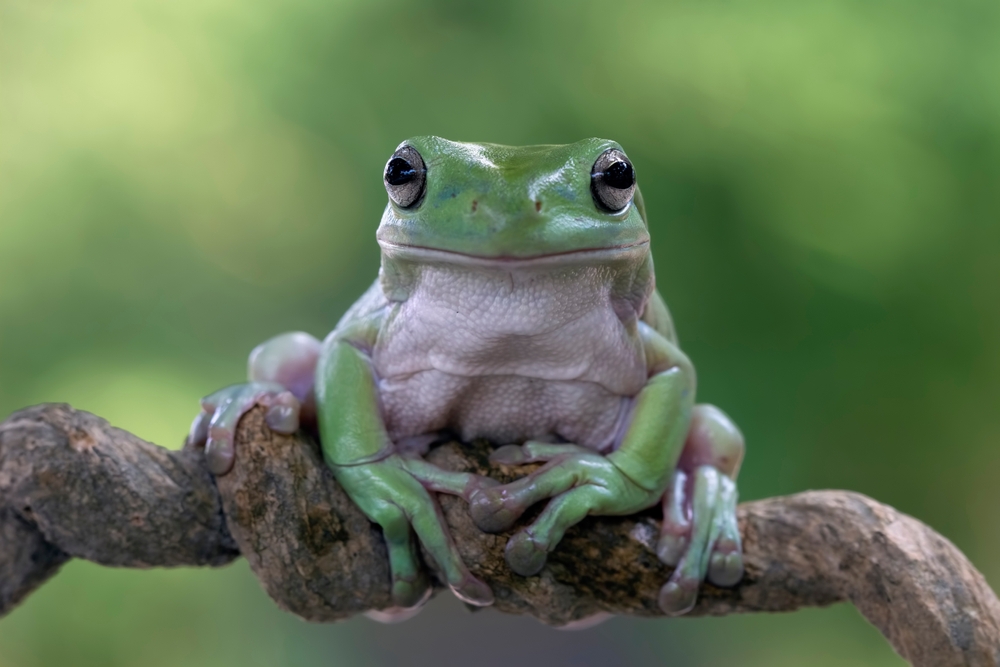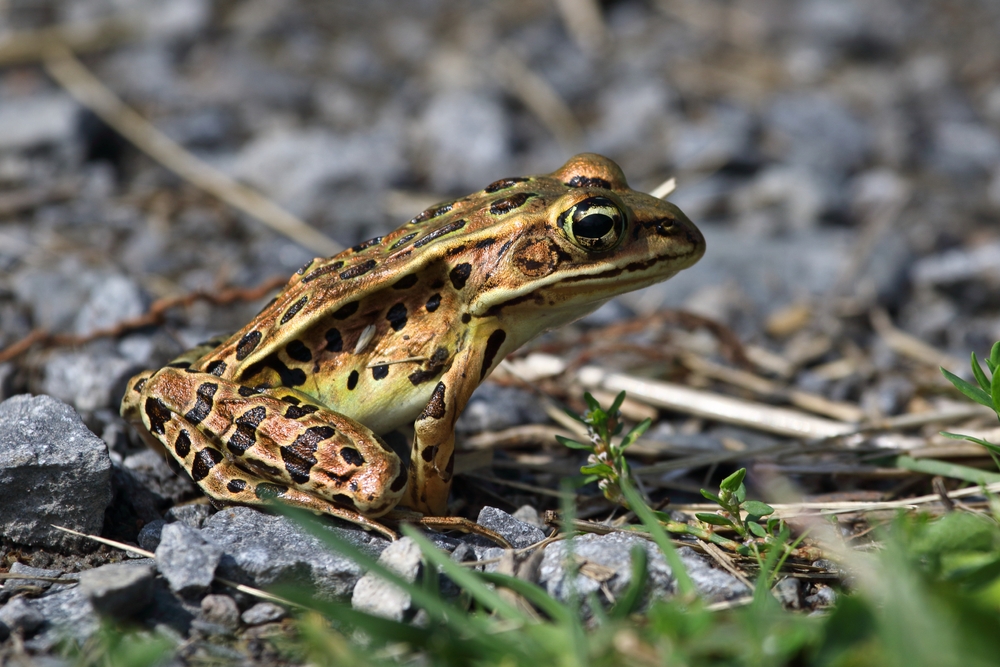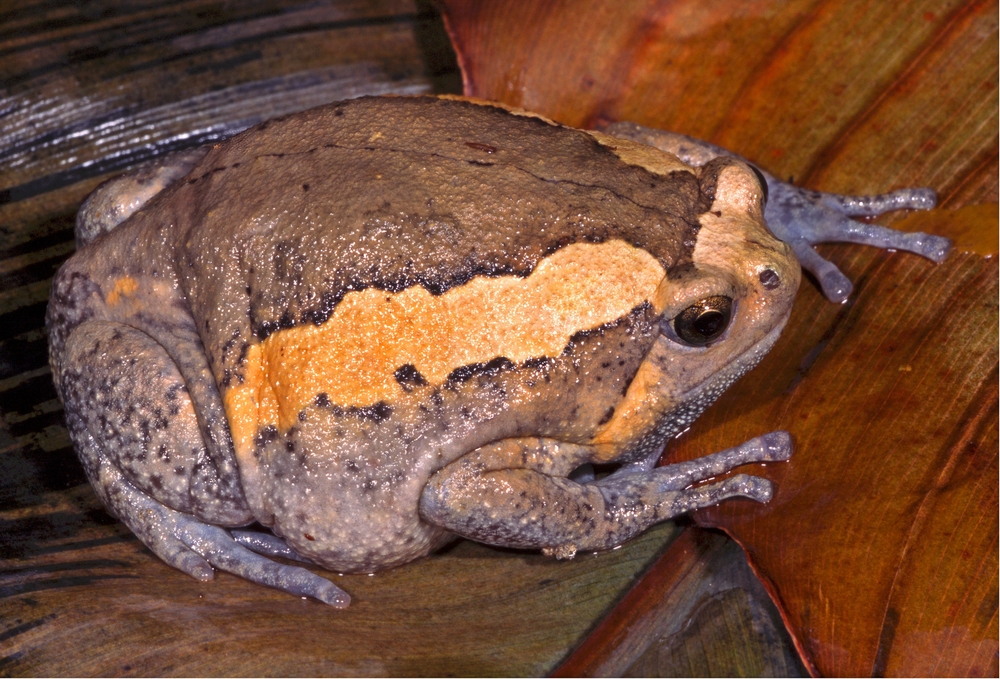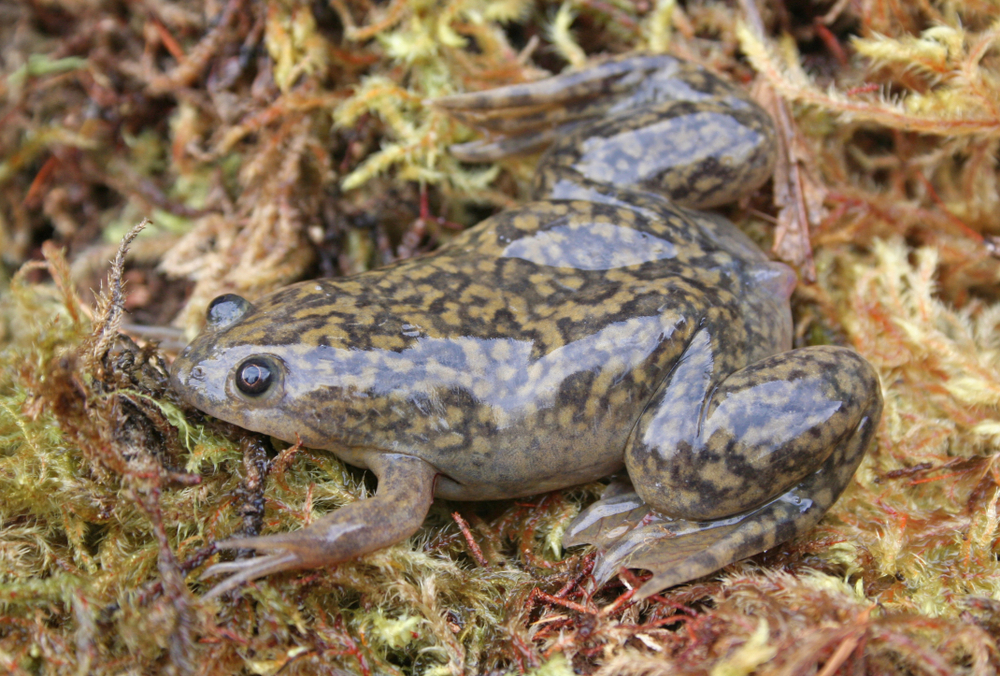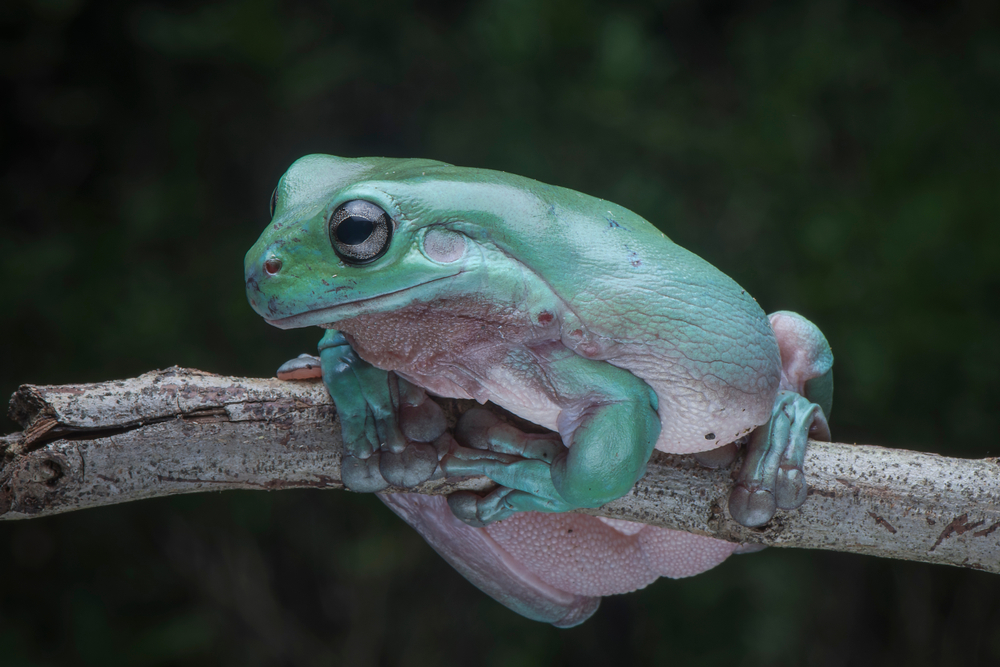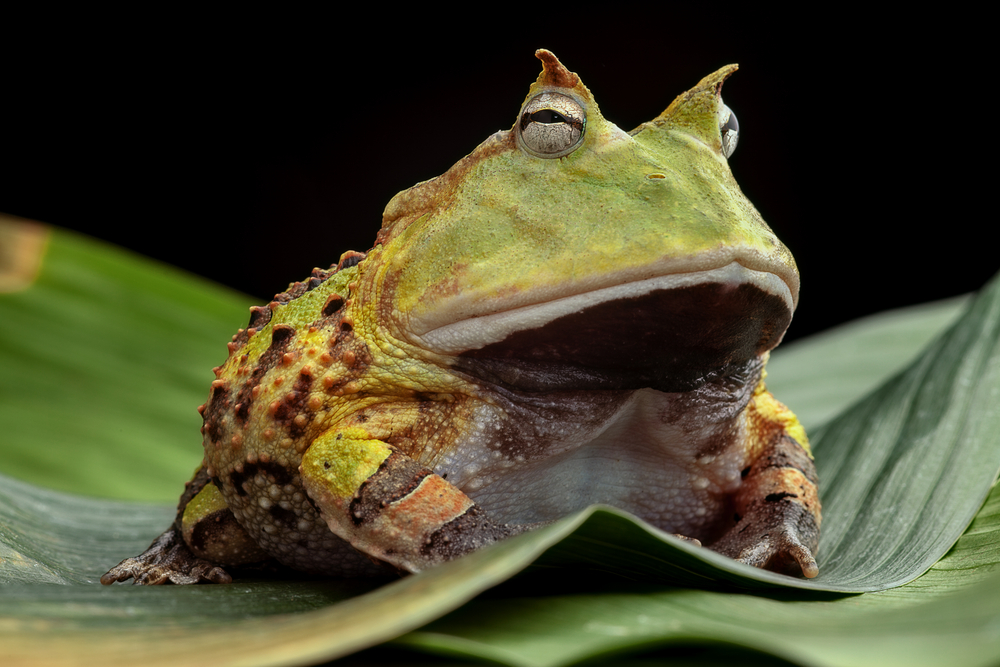Uniqueness
Madagascar Endemics:
Mantellas are entirely endemic to Madagascar, meaning they are found nowhere else in the world. This geographic isolation has led to the evolution of over a dozen distinct species, each adapted to specific microhabitats—from rainforests to highland mossy slopes.
Mimicry of Distant Relatives:
Despite being unrelated to poison dart frogs of Central and South America, Mantellas exhibit convergent evolution:
-
Both groups are small, brightly colored, and toxic.
-
Both derive their skin toxins from a specialized arthropod diet.
-
Both display aposematic coloration to warn predators.
This mimicry is an extraordinary example of how similar ecological pressures can shape unrelated species in similar ways.
Diurnal and Terrestrial:
Unlike many frogs that are nocturnal or arboreal, Mantellas are active during the day and strictly ground-dwelling. Their bold colors and daylight activity set them apart from most amphibians, which tend to avoid sunlight and exposure.
Toxin Derivation from Diet:
Like poison dart frogs, Mantellas derive their mild alkaloid toxins from their diet in the wild—mainly ants and mites. These skin secretions deter predators and may also possess antimicrobial properties. In captivity, they lose their toxicity, underscoring their dependence on native prey for defense.
Bright, Species-Specific Coloration:
Each Mantella species features its own unique color palette:
-
Mantella aurantiaca – brilliant orange (Golden Mantella)
-
Mantella baroni – green with black limbs and bright yellow dorsum
-
Mantella viridis – lime green with black or blue hindlegs
These striking visual patterns aid in species recognition, territorial displays, and predator deterrence.
Microhabitat Specialists:
Many Mantellas are highly localized—some are known only from single watersheds or isolated forest fragments. This makes them extremely vulnerable to habitat loss, yet also uniquely adapted to Madagascar’s diverse and fragmented ecosystems.
Conservation Icons:
Due to their beauty, rarity, and ecological sensitivity, Mantellas have become flagship species for amphibian conservation in Madagascar. Several species are listed as Endangered or Critically Endangered due to deforestation, climate change, and collection for the pet trade. Conservation breeding programs and habitat protection efforts are currently in place for the most threatened species.



































































